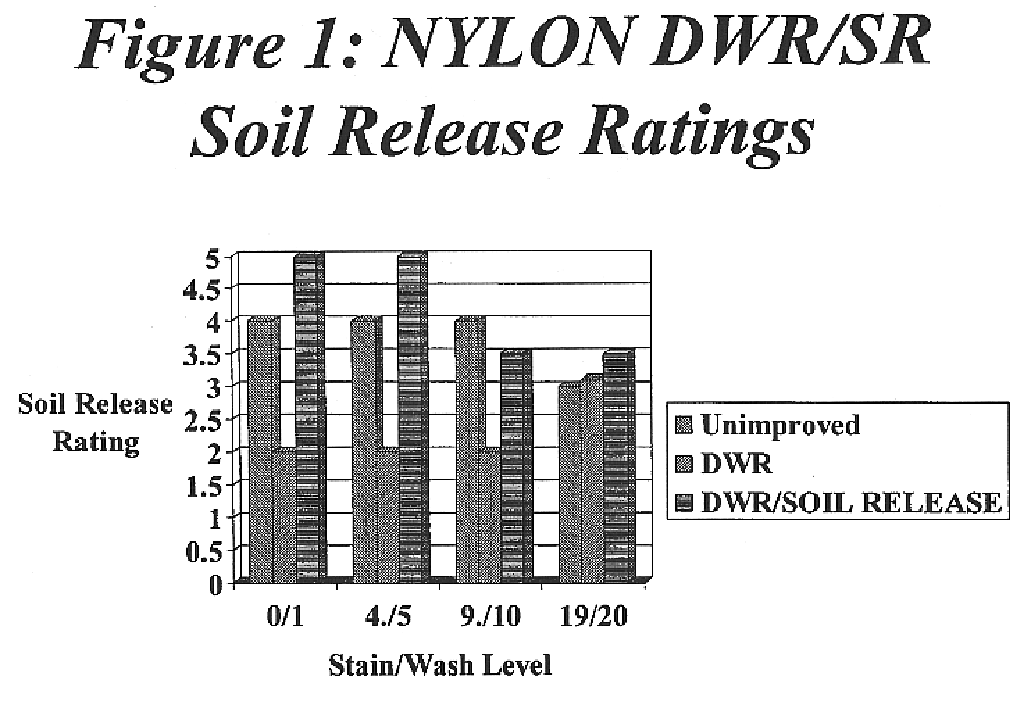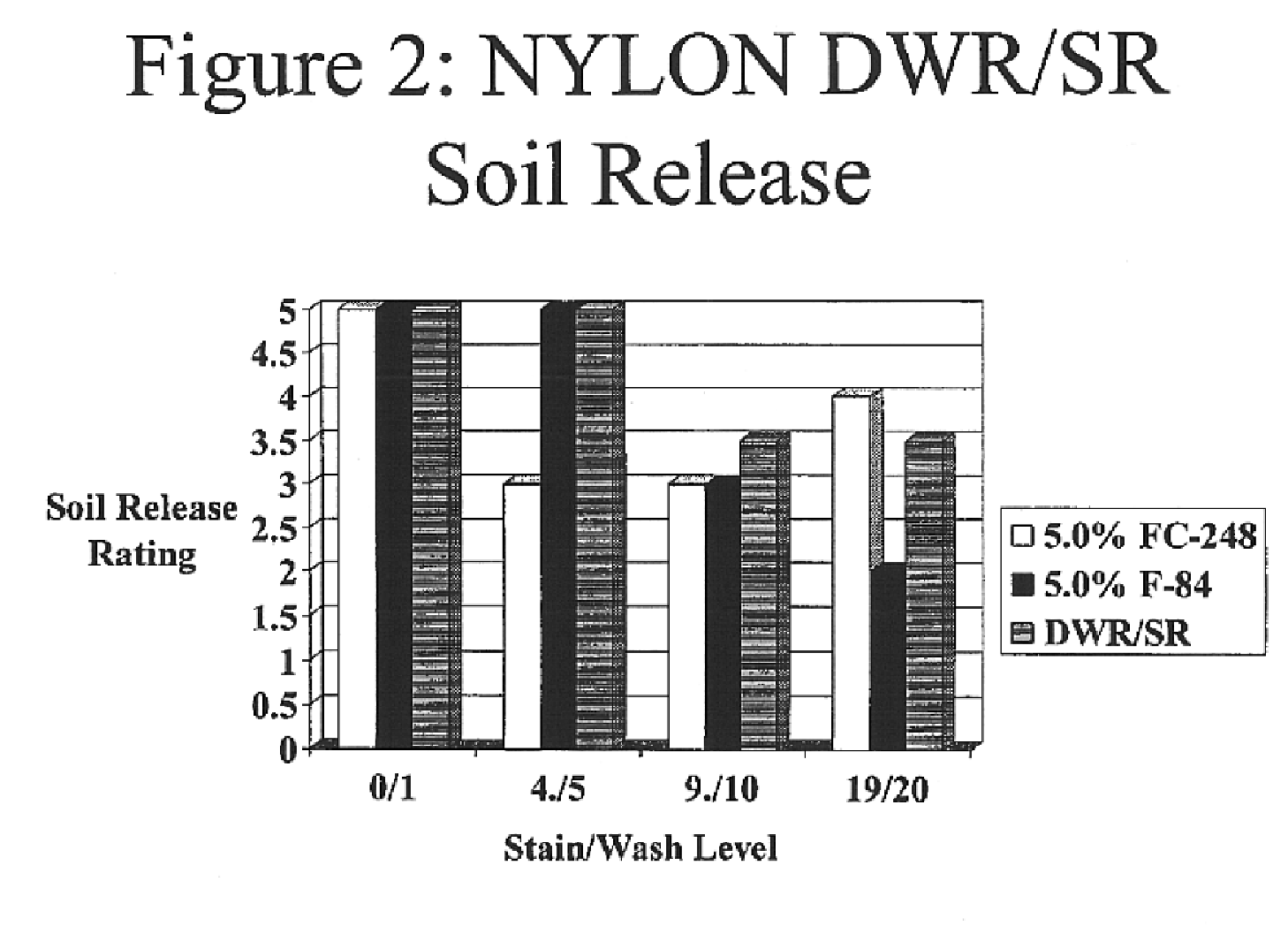Method of producing textile substrates having improved durable water repellency and soil release
a technology of textile substrates and water repellency, which is applied in the direction of liquid repellent fibres, weaving, other chemical processes, etc., can solve the problems of copolymer durability that is difficult to provide both properties to a single substrate for any appreciable length of time, and the trend of producing textiles with a natural/synthetic blend of fibers tends to aggravate the situation
- Summary
- Abstract
- Description
- Claims
- Application Information
AI Technical Summary
Benefits of technology
Problems solved by technology
Method used
Image
Examples
example 2
A woven nylon substrate was scoured to remove any residual auxiliaries. This substrate was then padded with an aqueous solution of 3.00% REPEARL F-8025 by weight. After the padding step, the material was squeezed to 100% wet pickup, dried and cured at 350 degrees F. Without the addition of the soil release polymer, the oil and water repellency remained high, but the soil release performances were not acceptable, as shown in Table 2.
example 3
A woven nylon substrate was scoured to remove any residual auxiliaries. This substrate was then padded with a water solution. The material was then squeezed to 100% wet pickup, dried and cured at 350 degrees F. Without the addition of either the fluorochemical polymer or the soil release polymer, the substrate exhibits acceptable soil release properties, but no water or oil repellency.
example 4
A woven nylon substrate was scoured to remove any residual auxiliaries. This substrate was then padded with an aqueous solution of 5.00% FC-248 by weight. The material was then squeezed to 100% wet pickup, dried and cured at 350 degrees F. The material exhibits acceptable water and oil repellency characteristics immediately after treatment, but after 5 home launderings, the water repellency was rated at 0 under the Spray Ratings test.
In the above examples, the Spray Rating test was conducted in accordance with AATCC (American Association of Textile Chemists and Colorists) test method 22-1980, also shown in Table 1 below. These tests were run using varying concentrations of fluorocarbon polymers and hydrophilic soil release polymers, either alone or in combination, on a variety of different nylon substrates. The pH of the mixture in each example was maintained at about 6.0. Every laundering process described herein, unless otherwise stated within the cited AATCC test method, was perf...
PUM
| Property | Measurement | Unit |
|---|---|---|
| pressure | aaaaa | aaaaa |
| durable water repellency | aaaaa | aaaaa |
| hydrophilic | aaaaa | aaaaa |
Abstract
Description
Claims
Application Information
 Login to View More
Login to View More - R&D
- Intellectual Property
- Life Sciences
- Materials
- Tech Scout
- Unparalleled Data Quality
- Higher Quality Content
- 60% Fewer Hallucinations
Browse by: Latest US Patents, China's latest patents, Technical Efficacy Thesaurus, Application Domain, Technology Topic, Popular Technical Reports.
© 2025 PatSnap. All rights reserved.Legal|Privacy policy|Modern Slavery Act Transparency Statement|Sitemap|About US| Contact US: help@patsnap.com



